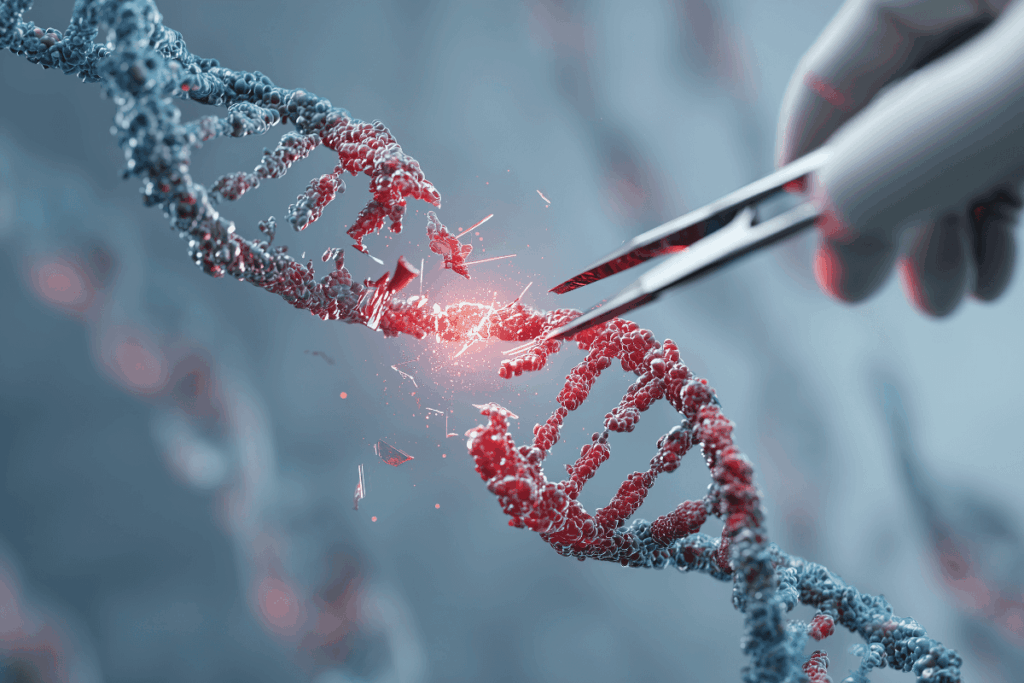
Genetic disorders due to early termination of codons take up nearly one quarter of known pathogenic human mutations. The existing genome editing therapies typically involve a separate treatment for each individual pathogenic variant, which reduces the speed with which these treatments can be invented and implemented. The strategy described in the article is known as Prime Editing–Mediated Readthrough of Premature Termination Codons (PCT). Instead of altering every individual mutation in vivo, the approach permanently modifies a naturally dispensable human tRNA gene to produce an optimized suppressor tRNA. This synthetic tRNA allows the cell to pass over PCT and reinstates production of complete-length functional proteins. The approach has the potential to cure numerous unrelated genetic disorders using a single therapeutic design.
Prime editing works by guiding a programmable nickase fused to a reverse transcriptase to rewrite targeted DNA sequences. The researchers used this tool to mutate human transfer RNAs in a manner that their anticodons could identify certain stop codons, and instead of halting the translation, they would base them with an amino acid. They screened all 418 high-confidence human tRNAs and screened tens of thousands of variants to find backbones, which give reliable suppressor activity when expressed at native genomic copy number. A preliminary screen developed tRNA anticodons to CUA, UCA, or UUA to address TAG, TGA, or TAA PCTs. The backbones of arginine, leucine, tyrosine, and serine transfer RNAs were identified through these experiments, and they could effectively suppress TAG.
These tRNAs were systematically optimized by a systematic engineer. They optimized the 40-base pair leader sequences, performed saturation mutagenesis of the tRNA body, and tested a variety of terminator sequences. Some of the mutations that were placed close to the anticodon loop gave up to a fivefold enhancement of the readthrough activity in comparison to the anticodon-only designs. Even the most optimally engineered variants involved a minimum of 6 changes in the base pairs of the native tRNA sequence. To install such designs, the group maximized prime editing activity by screening 17,280 engineered prime editing guide RNAs and other reverse transcriptase and mismatch repair inhibition settings. The most effective combinations achieved approximately 60 to 80% editing efficiency in human cells.
The safety was considered as a result of large-scale testing. Search for possible off-target genomic sites of 17,206 candidates presented no evidence of editing more than background. RNA sequencing revealed no significant expression of genes, and the expression of 28 various tRNA families was not different. Mass spectrometry has shown that readthrough occurred only at PCTs and did not prolong translation at natural termination codons more than 4036 natural TAG sites.
In human cell models of Batten disease, Tay Sachs disease, and Niemann Pick disease type C1, functional rescue was shown. With the same priming editing elements, engineered suppressor tRNAs were used to recover between 20% and 70% of normal enzyme activity on TPP1 and HEXA variants and partially recover the full-length protein of NPC1. A more general survey of 14746 pathogenic PCTs in ClinVar provided an average readthrough score of 69%± 30%. Examination of 15 pathogenic CFTR PCTs formed as much as 14% normal CFTR protein.
In living animals, dual AAV9 delivery of mouse suppressor tRNAs led to 11% and 23% editing of TAG and TGA in neonatal cortex, which rescued 24% to 26% reporter proteins. In a mouse model of Hurler syndrome, using efficiencies of 6.3%, 6.1%, 6.8%, and 0.05% in cortex, heart, liver, and kidney restored 7.6%, 6.3%, 1.7% and 0.31% of normal IDUA enzymes. This was sufficient to almost completely eliminate lysosomal storage pathology across multiple tissues. Altogether, the findings have shown that a single genome editing therapy may have the potential to cure a broad variety of diseases with various PCTs, although with no impairment in cellular function or natural stop codon fidelity.
Reference: Pierce SE, Erwood S, Oye K, et al. Prime editing-installed suppressor tRNAs for disease-agnostic genome editing. Nature. 2025. doi:10.1038/s41586-025-09732-2











